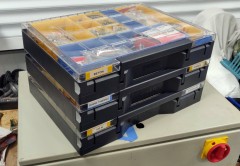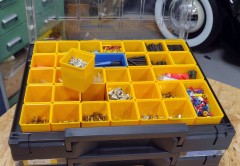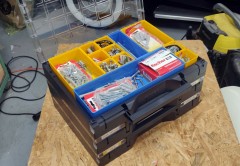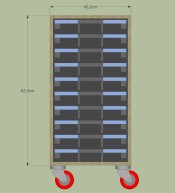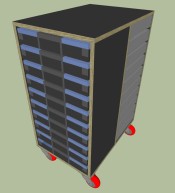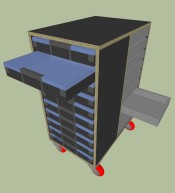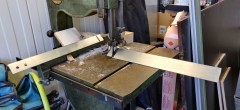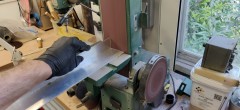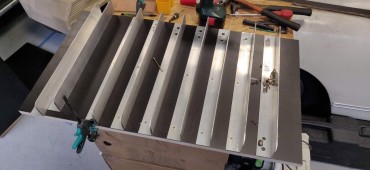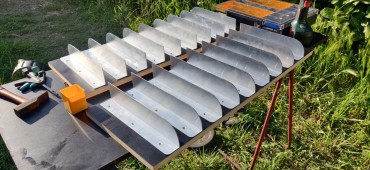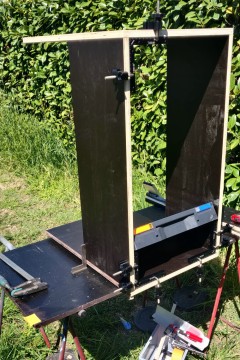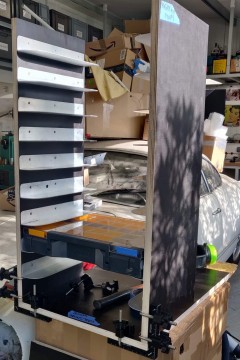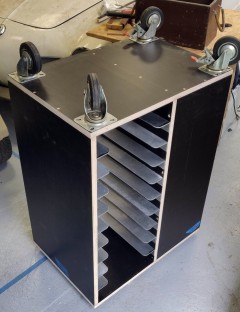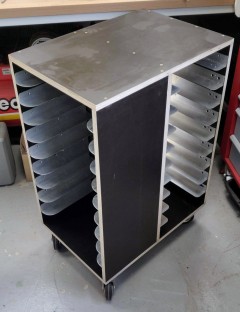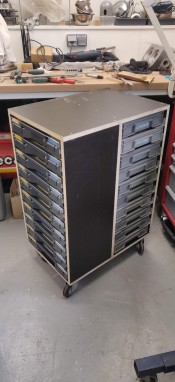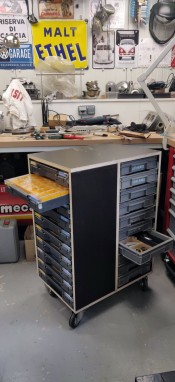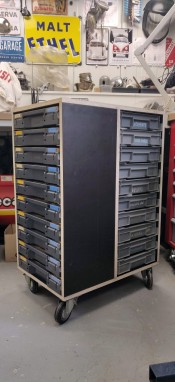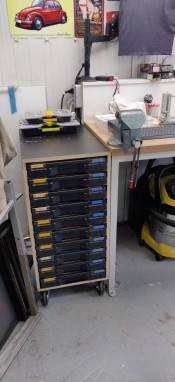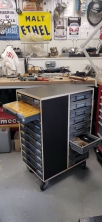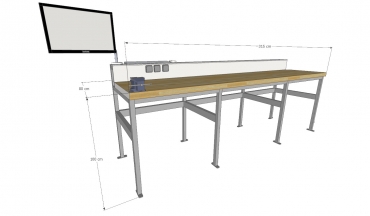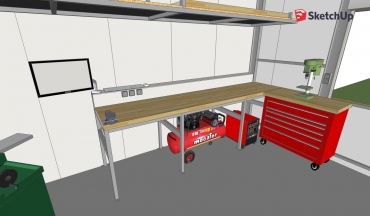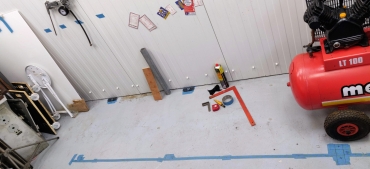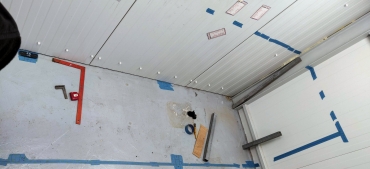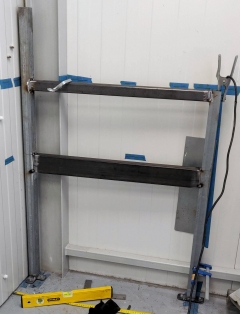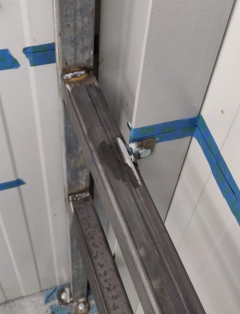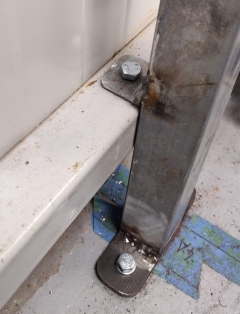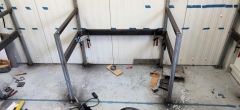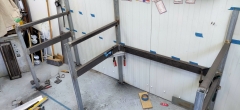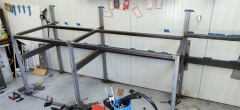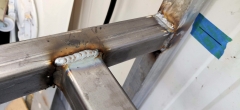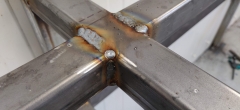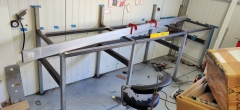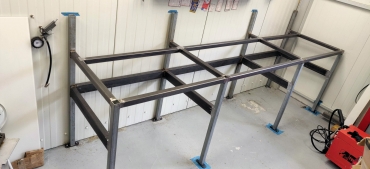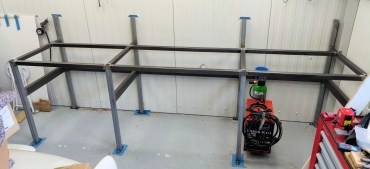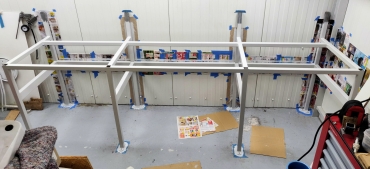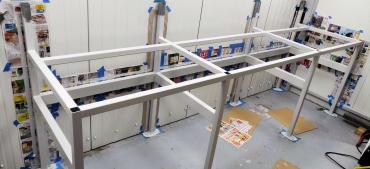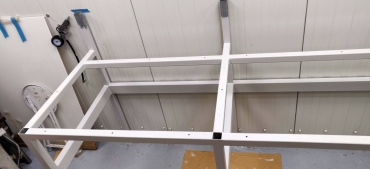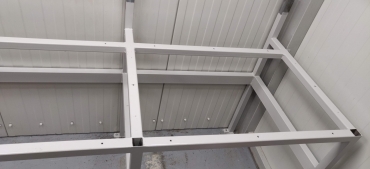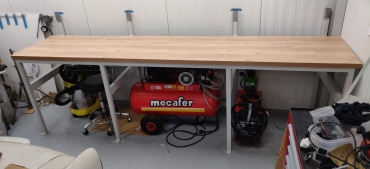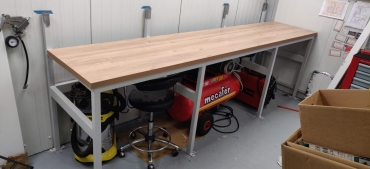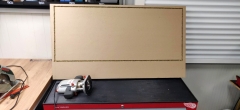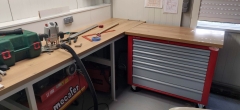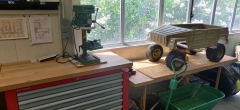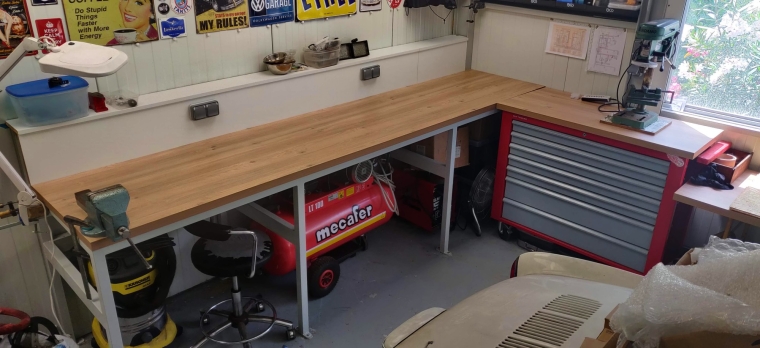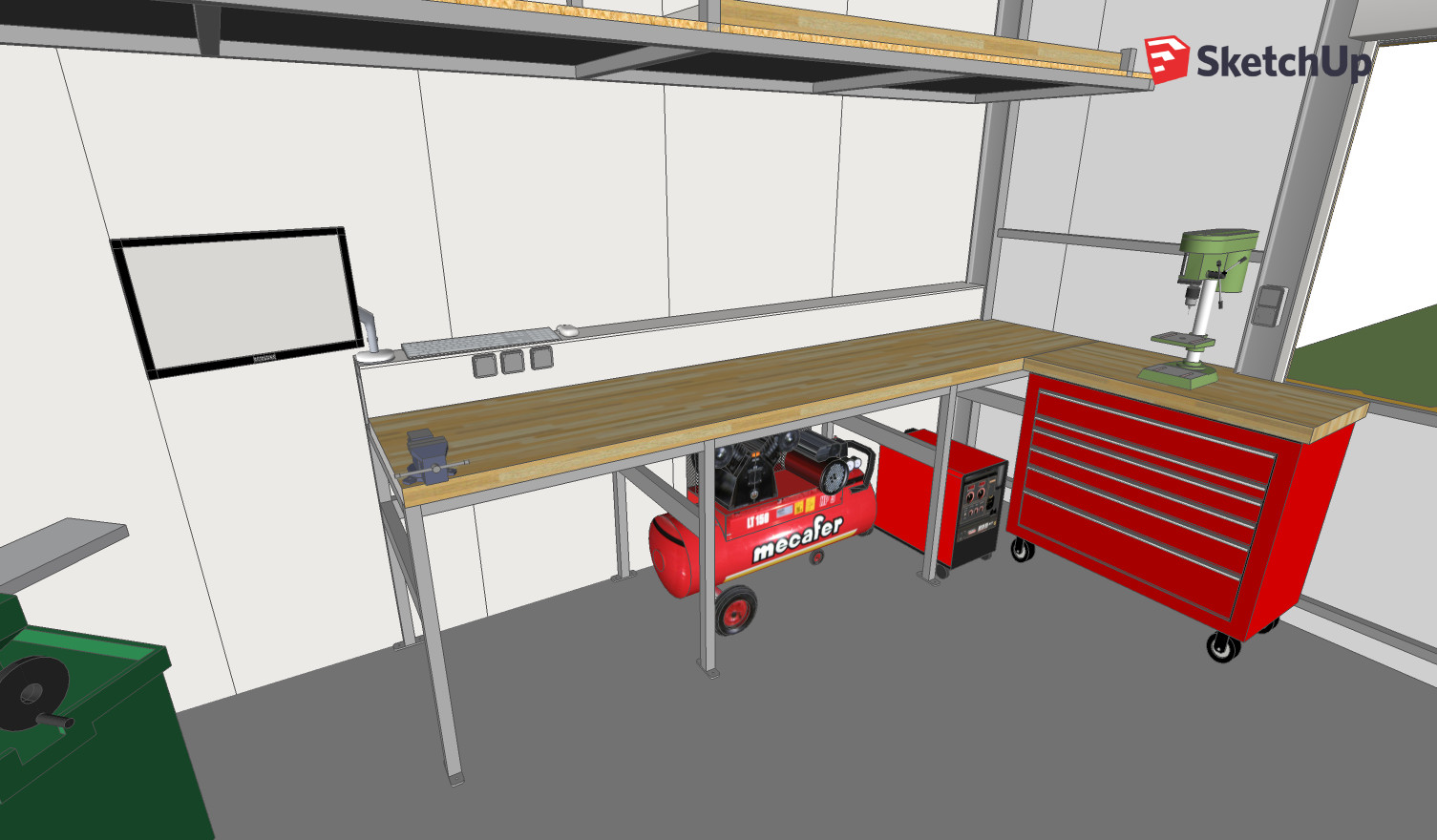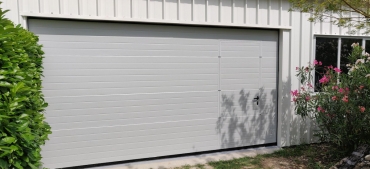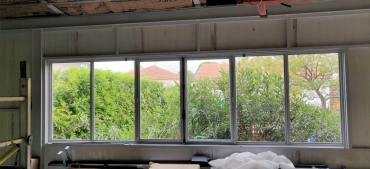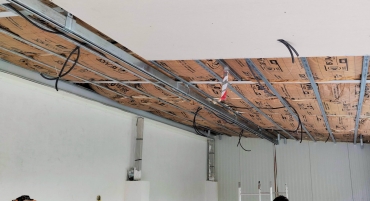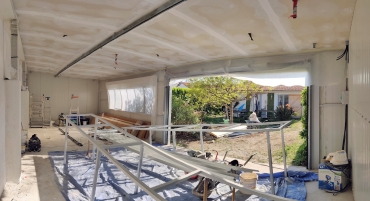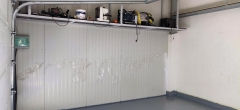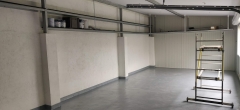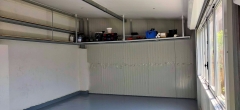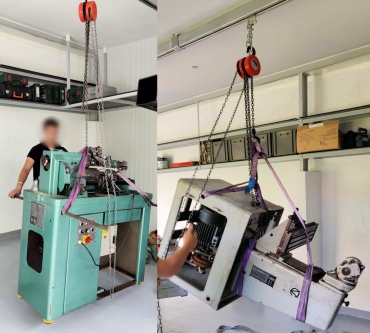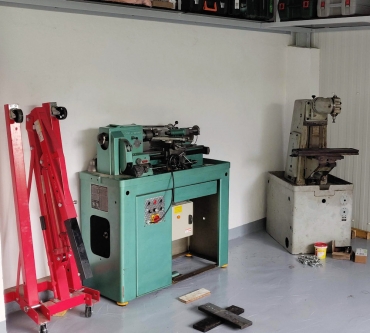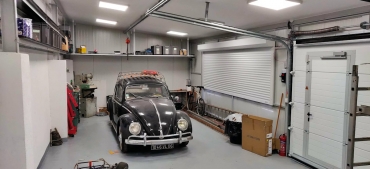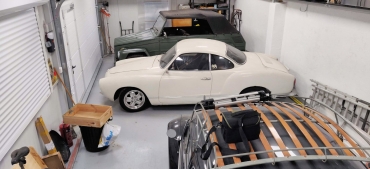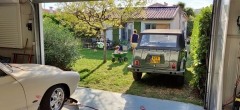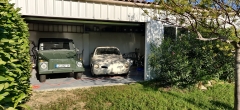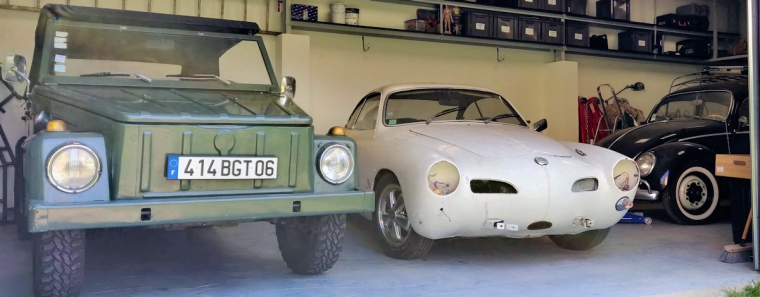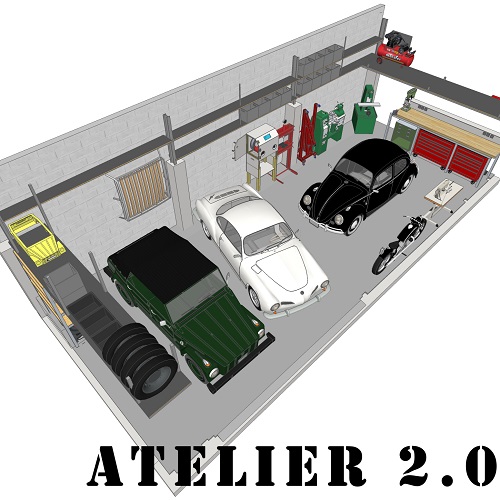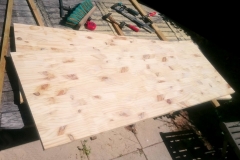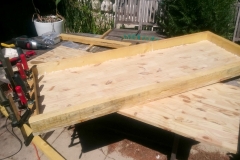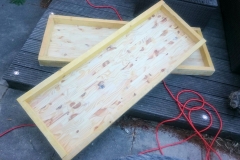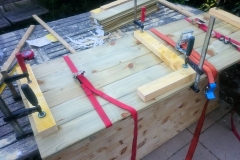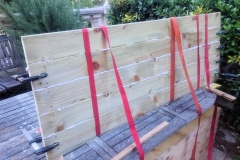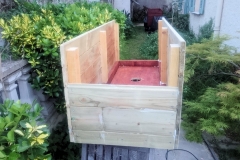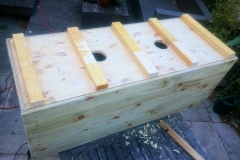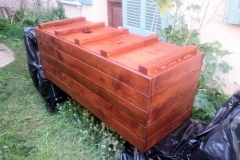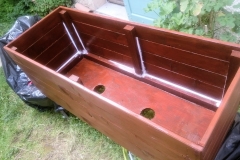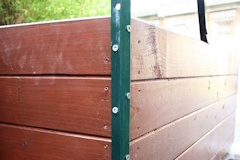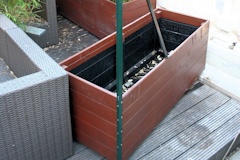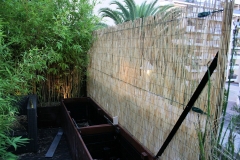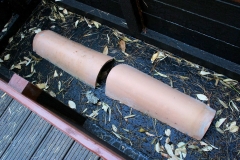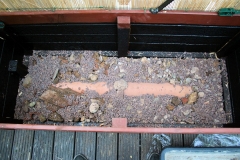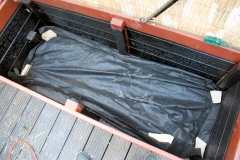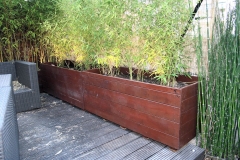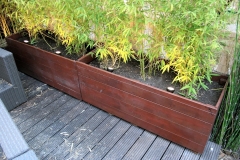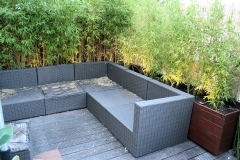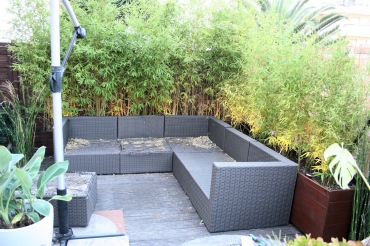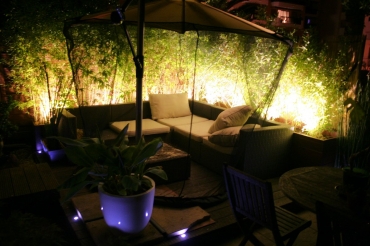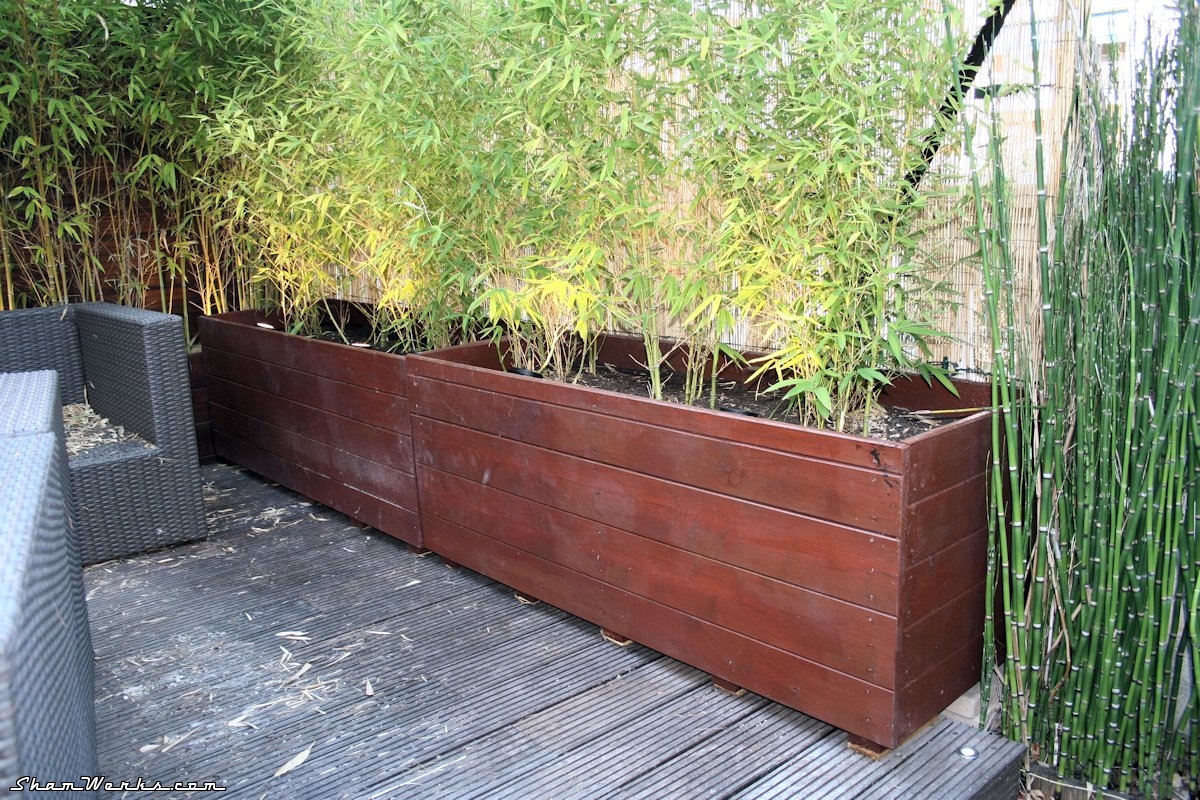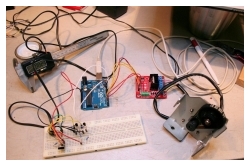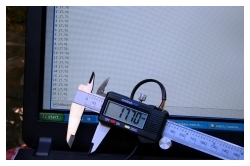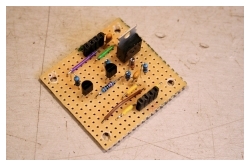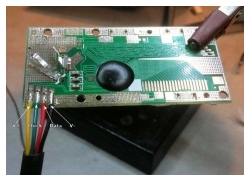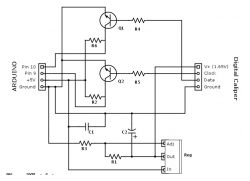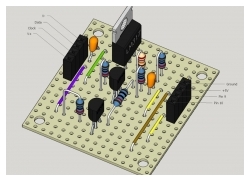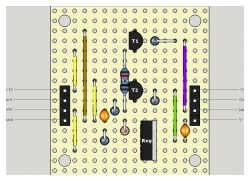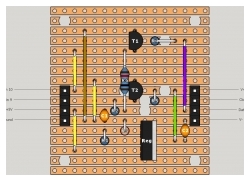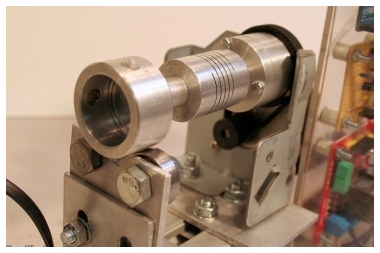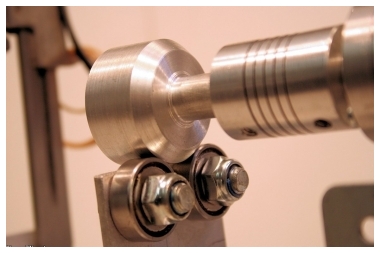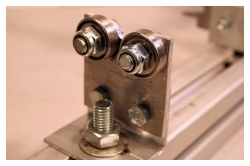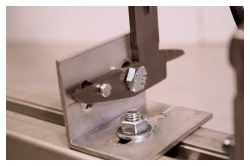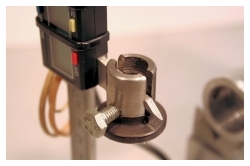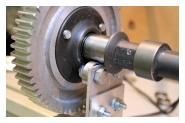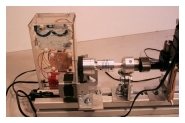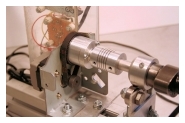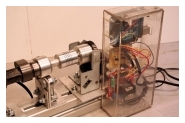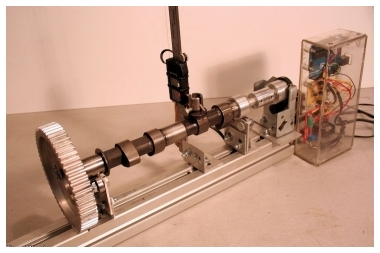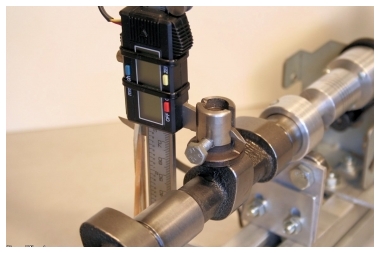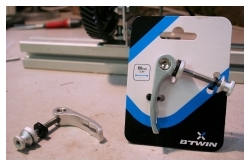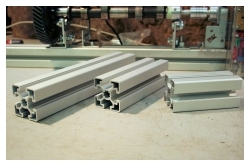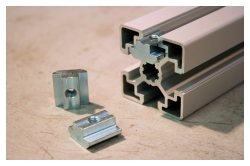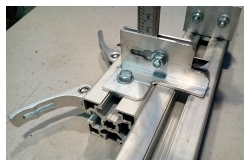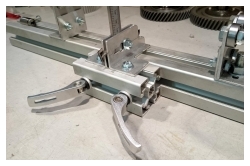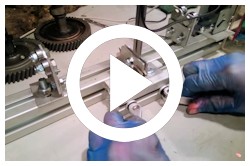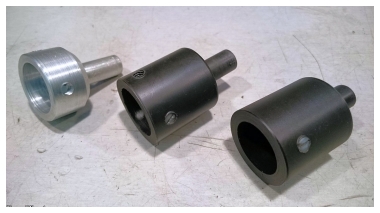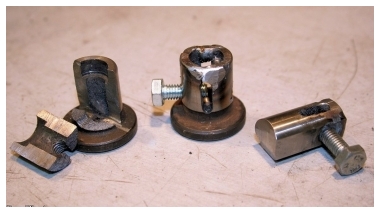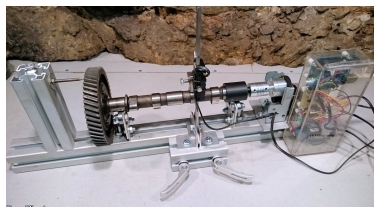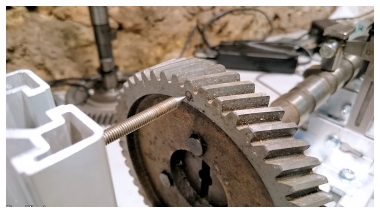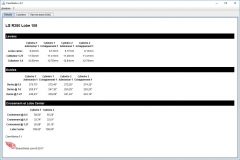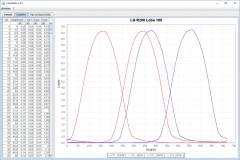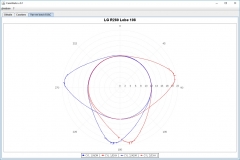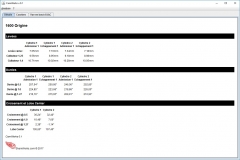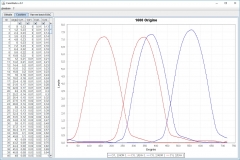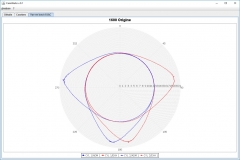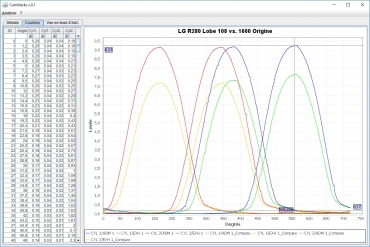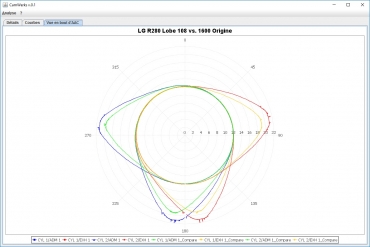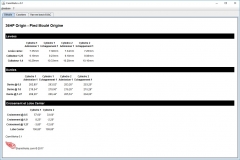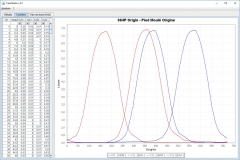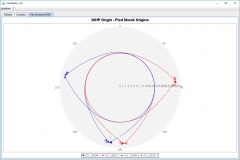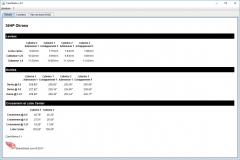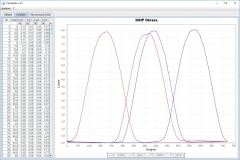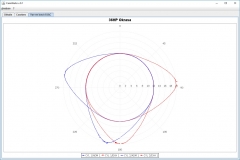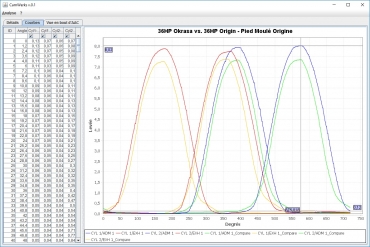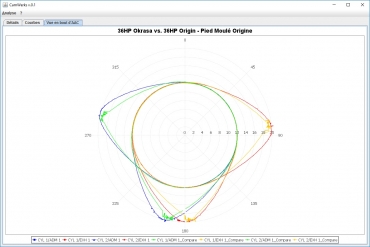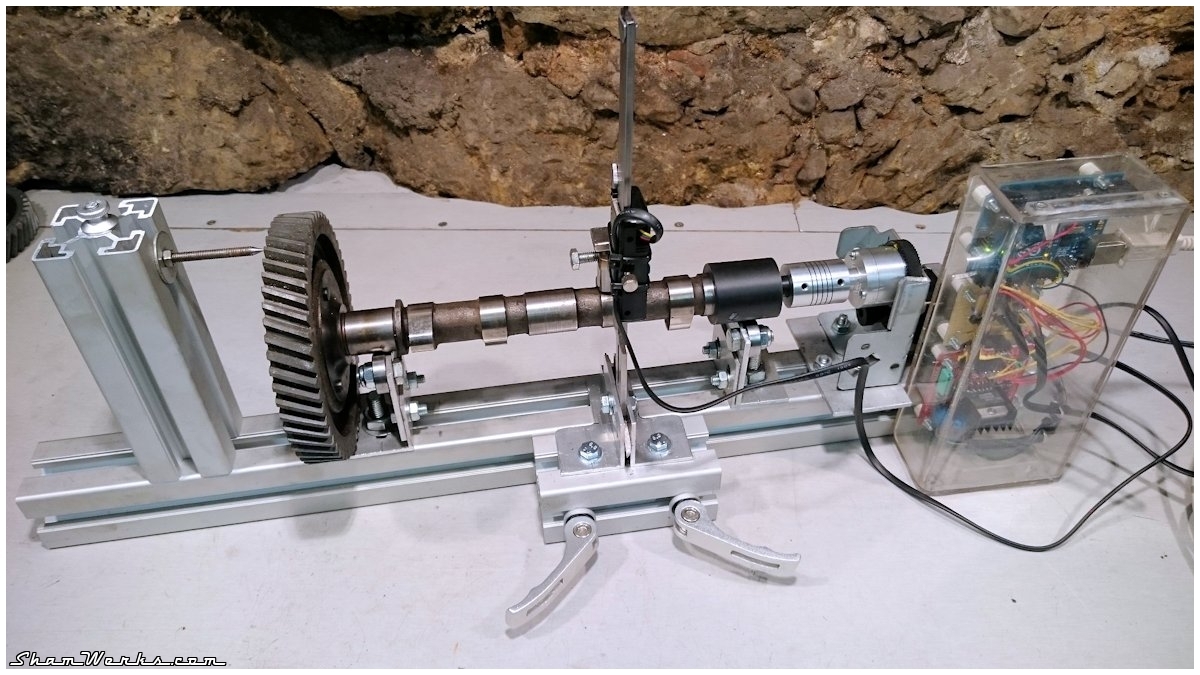Posted on 31/07/2024 at 15:35
Workshop organization : hardware trolley
In nearly 40 years of various DIY projects, I have accumulated a bunch of various storage boxes, for my screws, bolts, washers, dowels, terminals, etc. Obviously boxes of all sizes, making them difficult to organize and store, not mentioning find your way around easily.
It was time to find new...
AUER offers them in different sizes, with assortments of different compartments inside, and in standardized dimensions, stackable on my Euro standard storage bins of the same brand.
You can even customize them if you have a 3D printer, you can find specific compartments to print on Thingiverse and Printables.
This is free advertising, I'm not sponsored by them... But if by any chance AUER Packaging you're reading this...

I end up with ten of these organizers... And to be able to store them all, and find what I need easily, I made myself a custom-made trolley.
The structure will be in plywood, the organizers and trays being supported by aluminum angles screwed into the sides.
It was a bit boring to do: 36 aluminum angles, to cut then file to size, 54 corners to round, 108 holes to drill then mill and deburr... I was quite relieved when it was finished. For the plywood I use 18mm plywood for formwork (film-coated poplar from PointP ).
For the plywood I use 18mm plywood for formwork (film-coated poplar from PointP ).
The reason for this choice is that it is the cheapest plywood I could find, at €70 for a 250x125cm board (price at the time of purchase, it has increased since then)... You had to pay three times that in a DIY store.
The downside is that the boards are not perfect, as they are stored outside, so the edges can be a little delaminated and there is bot of little loss. But it is fine for the workshop and the price is unbeatable.
Cut with a plunge circular saw on a rail, and I screw everything together: I finished with 4 casters that had been lying around in a box for 15 years, and my new hardware trolley is ready!
Yeah, I know, it doesn't take much to make me happy right?

It was time to find new...
Organizers
I finally decided to invest a bit, and I replaced all my boxes (some of them I had since my teenage years!) with cases/organizers from AUER Packaging 40x30cm, featuring removable interior compartments. It's a beautiful product, very good quality, and even if it's not cheap, it's still much cheaper than an equivalent Sortimmo for example.AUER offers them in different sizes, with assortments of different compartments inside, and in standardized dimensions, stackable on my Euro standard storage bins of the same brand.
You can even customize them if you have a 3D printer, you can find specific compartments to print on Thingiverse and Printables.
This is free advertising, I'm not sponsored by them... But if by any chance AUER Packaging you're reading this...
I end up with ten of these organizers... And to be able to store them all, and find what I need easily, I made myself a custom-made trolley.
Design
I start with a design in Sketchup (no surprise if you've already been here): on the front my new organizers, and on the back as many flat trays of the same dimensions. And if necessary later, I can replace all or part of the flat tray with more organizers.The structure will be in plywood, the organizers and trays being supported by aluminum angles screwed into the sides.
Fabrication
The aluminum angles come from a stock of offcuts bought for cheap on LeBonCoin (the french Craig's List) : €40 for 14kg of ali angles, I have plenty left in stock! The same thing in a DIY store would have cost me an arm, a leg, and my son's soul: there are more than 12 linear meters in all!It was a bit boring to do: 36 aluminum angles, to cut then file to size, 54 corners to round, 108 holes to drill then mill and deburr... I was quite relieved when it was finished.
The reason for this choice is that it is the cheapest plywood I could find, at €70 for a 250x125cm board (price at the time of purchase, it has increased since then)... You had to pay three times that in a DIY store.
The downside is that the boards are not perfect, as they are stored outside, so the edges can be a little delaminated and there is bot of little loss. But it is fine for the workshop and the price is unbeatable.
Cut with a plunge circular saw on a rail, and I screw everything together: I finished with 4 casters that had been lying around in a box for 15 years, and my new hardware trolley is ready!
Resultat
This trolley slides along the workbench, at the same height, and by moving it I can easily access the milling machine behind. I use it all the time, and it's fantastic to finally find the bolts/washers/dowels you need right away - I only regret not having done it sooner!Yeah, I know, it doesn't take much to make me happy right?
Posted on 08/11/2022 at 17:20
Worshop : workbench 2.0
 OK, my "Workshop 2.0" is pretty cool, but without a "workbench 2.0" to go with, it's difficult to work comfortably. I've been tinkering around until now on the top of my rolling tool chest, but now it's time to shift gears...
OK, my "Workshop 2.0" is pretty cool, but without a "workbench 2.0" to go with, it's difficult to work comfortably. I've been tinkering around until now on the top of my rolling tool chest, but now it's time to shift gears...
I already had built a workbench in my previous workshop : you can find all the details of its construction here ; it had even gotten a lick of paint later...
But the main difference is that back then the workbench was squeezed in between two walls, fixed on each side : in my new workshop I can not do the same as the walls are made out of insulated sandwich steel panels, which is not structurally sound. Here, the only points I can affix the workbench to are the workshop steel beam in the right corner... and the floor. The workbench structure will therefore have to be very sturdy, so as not to giggle around when I'm struggling with something in the vise....
So this time around, it won't be made out of wood, but out of steel : I'll built the structure out of 40x40mm and 80x40mm tubing (#overkill). I had some 40x40 left from the workshop building, so I tried to optimize my stock... Yes, I know, I have a severe case of undersizophobia.
Design / Marking
Here we go : if it's not your first time here, you won't be surprised I started by a Sketchup design to find the best configuration : The outcome is 315cm long, 80cm deep, and 1m high, because I'm tall and tend to break my back on standard-height benches..I had initially planned on putting my rolling tool chest under the bench, but it would then have been too high, since I have a large shelf-like mezzanine above at 2m10. So I decided on putting the chest on the side, with a piece of countertop on it, to get a L-shaped workbench. OK, let's get to it!
I start by precisely marking, on the floor and the walls, where the workbench will fit, which I will use as a reference later (a laser level is perfect for this task). As the floor is not perfectly level, each of the 8 legs may have a slightly different length, so I'll build everything "on site" to ensure a square structure and a level top. Additional reason to build everything in place : the walls in that corner are not at a 90°, because of a shared wall with my neighbor, so this section of the workbench will not be at a square angle with the back wall, gonna have to adapt...
Structure
I then proceed to order the necessary steel from a wholesaler nearby, namely Durcomfer in Villeneuve Loubet : the 6m long 40x40 tubes cost me 36€TTC, while it would have taken me back 15/20€ per meter in a DIY superstore. Cheap, delivered the next day (for a 30€ fee), very welcoming people, I'll gladly do business with them again.To bolt them to the floor, each foot will be welded on a flat steel "sole" 40/8mm thick. Each "sol" is then bolted with two M8 70mm screws, into two Ø12mm steel pegs. That's a total of 16 M8 screws, I'm confident this bench is not going anywhere soon. #overkill4ever
That being said, full disclosure : I'm not going to win any competition with my welds, but they should hold!
Painting
I had initially planned on unbolting the structure from the ground to move it and finish my welds, as well as paint, behind it... In the end, I did nothing of the sort, so much for the 3 missing welds, the result is so much sturdier than I ever hoped it would be ; even when trying to jiggle it as hard as I can, it barely vibrates a millimeter. I even bought rubber pads to put between the legs and the wall to avoid any impact, but there is absolutely no risk it will ever happen.And my very OCD self will have to live with the fact the rear face of the structure is not painted (that one actually bothers me!)
The reason why I did not move the whole thing, is that the welds tend to put stress on the structure : if I had removed the screws from the floor, it would have been Hell to realign everything back in place... And this workbench is first and foremost a tool I wanna use as soon as possible, sue me for taking a shortcut.
The top of the back legs is left unpainted on purpose, as I will weld stubs on them to hold the back shelf.
Countertop
I ordered 2 counter tops from Leroy MErlin (french DIY store), 315cm long and 38mm thick, instead of the 58mm I originally wanted, just because it multiplied the cost by 3. I prepared the fixation by drilling 22 ø5mm holes in the structure, so I can screw the countertop from below.I just cut slightly the right end so as to adjust the top to the not-square wall, and I secured it with 70mm screws. Then I added the back shelf on top of the bench : I find it super useful to be able to store stuff right above the work area, plus it provides a vertical plan on which to put two dual electrical outlets... I can't remember where I salvaged the two lengths of perforated angle iron from, but it was maint to be, exactly the size I needed! Finally I add a piece of countertop on top of my rolling tool chest : the result is an L-shaped workbench, whilst keeping the tool chest mobile if required. I had calculated the workbench height based on the tool chest so they would end up aligned...
To keep the countertop piece in place on the chest, I routed grooves underneath that nicely fit over the tool chest flanges around its work area. It doesn't move at all, without any modification of the tool chest. The countertop is then cut to fit snugly around the steel beam.
And since I was left with another piece of countertop, I've put it on two sawhorses to get an additional, temporary/removable workbench (spoiler alert of the project I'm currently working on)...
Final Result
And... Tadaaaaaaaa!The outcome is really close to my initial Sketchup concept, and fulfills its purpose perfectly. There you go! I still gotta screw in the vise, and run electricity to the outlets, but I already actively use the bench!
Posted on 07/10/2020 at 16:30
Workshop 2.0
 I had mentioned it last January (actually, already teased about it in January 2018...), but here we are, I've got a new playground!
I had mentioned it last January (actually, already teased about it in January 2018...), but here we are, I've got a new playground!
A bit over two years ago, I moved to a new house, one of the main reasons being a hangar in the back garden... It's legit and on the land registry, but in a sore state, the steel structure being pretty rusty.
It took two years to tun it into a proper workshop. Authorizations, floods, heavy storms, suppliers delivery errors and delays, quarantine, Covid... Let's not go into details, but it's been hell to get stars to align! Well, at least it gave me ample time to refine my organization plans - I've have spent more time on Sketchup than I'm comfortable admitting.
So without further ado, here's the result! One large garage door that allows two vehicles facing out, ready to drive through, and an integrated walk-in door. And a large bay window to bring in light : A hoist on rail going all the way through the shop : To store stuff, shelves on the back wall, made to fit my Eurocrate format boxes, and on each side, two large "mezzanines" 70cm and 90cm deep, at a 2.10m height so I can comfortably walk below. And for the most curious of you wondering why the lower shelf doesn't extend all the way to the left : that's so that I can fit in a Westfalia Campervan one day! (that's the definition of wishful thinking right there) All my machines are not in yet, I still have to install all the electric outlets, and build a proper workbench, I'll slowly get to it step by step. And I use this time to sort out everything I've stored for like 25 years in my old garages... All in all, a bit over 50sqm (540sqft), leaving enough room to walk around the 2 cars behind the garage door, plus a "work zone" for a third car : So that's it! Full disclosure, that's a pretty big dream of mine made true right here...
A huge thank you to Gérald (and his two sons Kevin et Anthony!) for all the building work!
And big thanks to Bruno for lending me your tow bar to tow the cars between shops!
Now, I have to transfer all my tools/machines/parts from the old workshop... Maintenant, il n'y a plus qu'à rapatrier tous mes outils/machines/pièces... And find time to actually work on my projects!
Posted on 05/09/2017 at 06:53
Terrace Project : The Bamboo Containers Strike Back

The Bamboo Containers Strike Back
As the containers I built back in 2009 aged pretty well, I'll use basically the same plan.
Sorry, you'll get less pictures this time, the build method is the same ; and the picture quality is average, I only had my dying smartphone at hand,
I begin with a good Sketchup session to get the dimensions right, and find out precisely the materials I need to buy... You can download the sketchup file here if need be. Looking back, I was only half convinced by my choice of using OSB as a bottom board when I built my first set of containers (even though it's still holding 8 years later). Instead, I'll use this time a 20mm thick solid pine wood board, that look much tougher to me. And affordable, at 12.20€ the 200x60cm board ; I cut them down to the final 138x51cm by clamping the 2 boards together and cut both at the same time with a circular saw. Just like the first time, I use 20mm thick weathering boards on the sides. Everything's glued together with PU glue, then screw with stainless, deck screws.
Actually, I changed my mind at the last minute and decided to make the containers 5 boards high instead of 4... So I went back to get some more, but unfortunately they didn't have the same model available, only another slightly wider one... So I had to adapt a bit for my second container, meaning the two of them aren't exctly identical. My OCD self will have to live with that!
The product smells really bad, make sure you use a prooer filtering face mask, as well as gloves, security glasses and long sleeves...
Once dry (well, it actually never completely dries), it becomes inert and doesn't smell at all, and provides a watertight layer between the soil and the wood.
The bottom water outlets are, just like last time, plastic air venting grills, caulked to the bottom. Well, bad idea, should have done that before the tar, the silicon reacts badly to the tar, turns yellowish and cracks... Well, it wasn't critical, it'll do.
To enhance visual privacy (especially while the bamboos are growing), I install a reed screen above the containers :
- on the right hand side, a metal post is screwed to the container, with an additional diagonal support to help handle the cables tension.
- on the left hand side, I directly drive 3 stainless, heavy-duty screw-eyes in the last post of my wooden fence.
I first put a terracotta tile above each grill to protect them from the weight of the soil above.
Then, I add a 6-7cm layer of small stones, to keep a draining layer, which I perfect with a bag of gardening pozzolan I had laying around.
Then I put a double layer of geotextile over the whole thing, to prevent soil and roots from clogging the drain too quickly. I finally add some soil (a bit over 5 bags of 60L in each container), plant 6 bamboos, taaa-daaaa!
I install four 12V LED waterproof spot lamps, to blend in with the other 2 containers... And I'm done, just have to wait for the bamboos to grow a bit, and I'm done with the bloody neighbors-across-the-street hassle!
Posted on 05/04/2017 at 21:50
Camwerks : DIY Camshaft measuring bench

DIY Camshaft measuring bench
I stumbled upon a picture of a camshaft control bench on Vince/Panelvan's blog (here)...
As I had just bought the high-performance camshaft for my Ghia, the idea of being able to check its actual features (and verify what's given by the part's constructor) made its way ; I was pretty sure I could find a way to make it happen on a budget. And, let's put it mildly, I'm kinda stubborn.
Thinking about it, there must be a way to put together a stepper motor, a digital caliper (cheap chinese models have a serial output), and an Arduino to control all of the above and push measures to a PC through USB... Amarite?
For those of you who don't like reading (aka "TL ; DR Team")
Long story short, after a couple of hours tinkering around, I got myself a functioning bench : here's the result in video :(watch it in full screen HD 720p to be able to read the results)
Sorry for the less-than-average quality of the video, which in addition doesn't show the latest version of the software... I'll try to shoot another one with a better lighting!
Electronics
I use an arduino as an interface between the bench and the PC, but it can not control the stepper motor directly, it needs a driver ; I found a chinese one, based on a L298, for less than 5€ on dx.com (here).Beware, if you use the same driver as I did, do not trust the allegedly regulated 5V output on it ; I wanted to use it, but it blew the very first time I tried to ; I ended up with a blown condenser on my arduino...
Speaking of made-in-China, I also buy a 15€ digital caliper... Well, TBH, if I had to redo it all over again, I'd probably go with a slightly more expensive version : the electronics are identical between versions, but the "mechanical" part can be better. The entry-price ones tend to grip/jam a little bit, which can lead to measure inaccuracies.
Since I don't wanna have a battery that dies on me in the caliper, I use a LM317 to feed it 1.64V, generated from the 5V of the arduino (the original battery on those calipers is 1.5V).
I also add two transistors to step up the signals from the caliper (clock and data) to levels the arduino can read (2.5V minimum). That's kinda overkill, just feeding the caliper with a higher tension may have done the trick, but it didn't look nice to me...
I take appart the caliper in order to solder in the output cable (I use an old land-line phone cable, perfect for that use) ; you can find specific cables that will "plug" into your caliper, but they are more expensive than the caliper itself, to solder it is! I than tie-rap the cable to the caliper to avoid mechanical constraints that would for sure rip the solder apart.
After I validated the circuit on a breadboard (it worked like a charm on the first try, I would have never guessed so!), I transfer it onto a veroboard/strip board.
You'll find down here the schematics of my circuit. Mind you, I have no such pretension to say that this is the right/best way to do it, electronics is by no mean into my comfort zone... But it does work great, feel free to modify/enhance it as you like! The Sketchup model is available here (4Mo).
Bill of materials :
- Reg : LM317 Voltage Regulator
- T1, T2 : Transistor NPN - BC547B - BC171
- C1 : condenser 100 nF - 50 V
- C2 : polarized tantale condenser - 1 µF - 35 V
- R1: 240 Ω
- R3: 75 Ω
- R2, R4, R5, R6: 10 kΩ
The following web sites helped me a lot while designing my circuit :
- instructables : Reading Digital Callipers with an Arduino
- martin's useless and useful creations : arduino reads digital caliper
- Learning about electronics : LM317 resistor and voltage calculator (calcul de la valeur de R1 et R3)
Mechanical part
Now for the bench : I need something sturdy enough to get somewhat reliable measures.I start with a Bosch Rexroth 45x45mm profil, bought on eBay, but in the future I'll buy from Motedis, they are much cheaper and have all the useful accessories...
The grooves let me easily move the mounts/brackets, and the caliper stand, making the whole bench adaptable to camshafts other that Aircooled VW ones.
For the stepper motor, since I've pulled appart my fair share of printers and photocopiers in the past, I've got a stash of spares... So I picked one ; a nice 200 steps motors, that comes with a 1/3 ratio gear/belt set, for a final 600 steps output ; that's 0.6° increments on a full 360° rotation... Not bad!
I lathe down an aluminium adapter for my stepper motor, and another one for the camshaft (with a nylon screw in order not to dent the camshaft), linked through a flexible coupler. This means I'll need a new camshaft adapter for each and every camshaft diameter... I can live with that, but I can imagine a system using a small chuck instead to avoid that.
Then with some aluminium angle scraps, and a few skateboard bearings, I make supports for the camshaft on one side, and for the motor adapter on the other.
Finally, the caliper is fixed on some aluminium angle ; I angle-grind a VW lift (with some finishing done on the lathe) to put it on the jaw of the caliper, in order to have the same kinematics as in the actual engine. The stepper motor output is connected to the camshaft adapter through an aluminium flexible coupler (5€ in Chine, agian...), which forgives the alignment errors. It's a 10mm-10mm coupler, that I bored on the lathe up to 12mm to make it fit my already lathed parts.
Finally, to give the electronics some much needed protection, I fashion a box out of some perspex scrap ; I cut it with a jigsaw, then use a heat gun to bend it... The result might not be aesthetically perfect, but it does the job.
I lathe some plastic stands out of a bit of PVC round to attache the electronics... Yeah, I know, plastic screws would have been a better choice, but I did with what was available in my drawers, ok?
There, the whole system runs now, even though some points will need attention. On these pictures you can see the caliper movement return movement powered by rubber bands : it actually did not work that great, the caliper tends to jam, which creates mistakes in the measures.
In the video at the beginning of the article, you can see I now use a weight (a ratchet wrench extension, stuck on a neodyme magnet) ; it works much better like that!
Bench evolution
So, it works, but can be improved... As I was writing this article, a freidn o'mine gave me a good idea to make the caliper movement more user-friendly (thanks aSa!), so here's already a first evolution of the bench!The idea is to use an eccentric cam clamping lever to lock the caliper in place ; you can find these levers in bike shops, as they are use to lock saddle seats(I got mine from "Decathlon" for 5€ : see here).
So, I order a few more pieces of the same 45x45mm Rexroth profile from Motedis : I ordered 10cm, 15cm and 25cm lengths (for an affordable 1.27€, 1.64€, and 2.38€), as I wasn't sure yet how I'd use it yet. I also ordered a few of those tapped blocks that go into the grooves ; at 0.30€ a piece, I wasn't going to go through the hassle of makin'em myself.
As I modify the caliper's brackets, I make it stronger by using two aluminium angles, to prevent it from bending from side to side. The result is perfect (see video) : moving the caliper is now done in a matter of seconds, no need to use a wrench to adjust it... Great!
I go back to my lathe to make a new camshaft adapter : it wasn't perfectly fit on the camshaft, fit created a small cyclic error in the measures.
And since I got myself some POM (PolyOxyMethylene), stock, I make 2 adapters : one for Type 1 camshafts (ID 25 mm), and another for 36hp ones (ID 24 mm). Both have an identical 34mm OD, so I can swap'em without having to adjust the height of the bearing support below.
On the feeler side, the one lift I had modified to install on the caliper's sliding jaw broke on me : that's a very hard steel, without any elasticity ; I did tighten a bit too much and it broke like glass.
So I made a new one, and this time I added ttwo MIG welding spots to prevent any "opening" when tightening the screw. No mo'problems!
I also make another feeler with an old 36HP lift ; same method, angle grinder, MIG weld, drilling/tapping. With this one I'll be able to measure my "Okrasa" 36HP camshaft (Joe Ruiz) : the Type 1 lift would not work on a 36HP camshaft, the cam is too small and the lift ends up touching foundry high spots... Many thanks to Eric "Underdog" Simon who sent me a sacrificial 36HP lift to make this one! And TADAAAAA!
I also added a length of profile with a "needle" to precisely align the camshafts on the pulley spot, this way the curves in the software will precisely align too, allowing me to accurately compare camshafts.
Software
Now on the computer side, I needed a bit of software to pilot the bench, receive the data back from it and smartly display the results...So I dove in and wrote CamWerks.
If you're interested, here's the soft, GPL open source license, you can download it and use it for free. Limited support on the other hand... I like you guys, but I ain't got much spare time!
Just unzip the archive, and launch "CamWerks.jar", it should run first try...
If you just wanna have a look at the output from my tests :
The Zip archive will be enough : it contains the files I generated from the different camshafts I had at hand (".cam" files, in the folder "Cam Files") ; even if you don't have a bench connected, you'll still be able to visualize them in the application.
If you wan't to build a bench like mine :
It's a tiny bit more complex, you'll have to :
- Flash your arduino :
- install the Arduino Serial Command library on your IDE (download here - it's just a handy USB communication library)
- Flash your arduino with the "sketch_CamWerks.ino" file (in the Zip archive, in the "Arduino" folder)
- Install the RXTX parallel communication library to enable PC/arduino communication (the original website
rxtx.qbang.orgis down, but I've made the library available here : binary / source).-
edit 20210819 : Paulo from afrautotecnica pointed out that the RXTX library was not compatible with Windows 10 64bits, but a compatible version was available here : fizzed.com/oss/rxtx-for-java. Thank you Paulo for sharing!
To make sure these libraries remain available in the future, I've put them here for download as well :
-
edit 20210819 : Paulo from afrautotecnica pointed out that the RXTX library was not compatible with Windows 10 64bits, but a compatible version was available here : fizzed.com/oss/rxtx-for-java. Thank you Paulo for sharing!
- Validation : once your Arduino connected and flashed, from the "Serial Monitor" tool of the IDE, you can try and send the following commands to check the behavior of the Arduino :
- PING : the Arduino replies PING_ACK.
- STEP : the Arduino replies STEP_ACK, and the stepper motor turns by one step.
- MEASURE : the Arduino replies the value of the measure done by the calliper.
The project is available here : https://github.com/ShamWerks/camwerks
Measuring cycles :
Sometimes, there are inaccuracies when measuring : the caliper may seize up a little, or a grain of dust on the cam, whatever... The result being a notch into the curve ; usually not much, a few hundredth at most... But to avoid that I implemented a N-rotations measuring cycle : I do the full-rotation measurements N times, and then take the average of each measure point. It smooths inaccuracies, while making the whole measuring process N times longer. But hey, no hurry, I can wait longer for a better result!
Cams profile view, as seen from the camshaft's axis :
Deducing the profile shape from the measures was tricky, I've had to ask for help to a math researcher friend of mine! Thank you JB for the tea-biscuits-and-math afternoon!
The result is not perfect, and can only be correct using a flat faced lifter ; it'd be incorrect with a round one (as they are on 36hp), or roller-type lifter.
I also added a curve smoothing algorithm (a simple sliding window average) so that the cams shape would look nice ; long story short, remember this view is provided "as is", don't look too much into it.
Versions history :
- 2017-04-05 : version 0.1 : first version released.
- 2019-11-27 : version 0.2 : update to fix a bug that made the measuring process crash after just 1 step of the motor (when trying to round a double variable that turned out to have value set to "infinity" for some reason - gotta have to find out the root cause at some point)
Results
Following are the resulting data out of the different camshafts I had laying around...As you can see, the first tab presents a Detailed Report giving different informations : duration re. lift, maximum lift, valve lift re. rocker ratio, lobe center and overlap.
The second tab show the lift curves of each cam ; the third and last tab is an axis view of the cams profiles.
Last but not least, I've added an option in the software to compare two camshafts. It allows to surimpose the curves from two different camshafts in order to visualize their differences.
L&G R280 Lobe 108°
Here we go, let's put my brand new L&G R280 Lobe 108 camshaft to the bench, and compare the output with the datasheet provided with it!Here's what I measured with my bench : And now, let's compare this with the camshaft datasheet provided by L&G (the intake durations are given by L&G for a 1.27mm lift). Here's how my measures compare with the datasheet :
| Datasheet Value from L&G |
CamWerks measured value | ||||
|---|---|---|---|---|---|
| Cylinder 1 | Cylinder 2 | ||||
| Int. | Exh. | Int. | Exh. | ||
| Cam lift | 9.19 mm | 9.23 mm | 9.13 mm | 9.17 mm | 9.13 mm |
| 1.25 rockers lift | 11.49 mm | 11.54 mm | 11.41 mm | 11.46 mm | 11.41 mm |
| 1.4 rockers lift | 12.87 mm | 12.92 mm | 12.78 mm | 12.84 mm | 12.78 mm |
| Intake duration | 242° | 242.23° | 241.42° | ||
| Exhaust duration | 242° | 239.09° | 243.19° | ||
| Overlap duration | 26° | 25.68° | 26.15° | ||
| Lobe Center | 108° | 108.6° | 108.0° | ||
The biggest delta I found is about exhaust duration : -2.91° / +1.19°, that's a bit much... I'm gonna double check the way I reckon the angle of the "peak" on the cam. Sylvain from Classic-Store (whom did not hesitate spending 20 minutes on the phone with me, while I only sent them a quick technical question... Fantastic customer service, thanks!) told me that it's not uncommon to have 1 to 2 degrees of difference on a camshaft, due to the original pattern/jig wearing off. So, not such a bad result in the end.
I've not yet managed to calculate the opening advance and closing retard... This information depends on the position of the camshaft in relation to the crankshaft (well, actually, the TDC and BDC), and I've not yet managed to integrate this into my formulas! (for now!)
I also do not have the "commercial duration" : well, this value is of no real interest actually, the lift at which it is measured is arbitrarily chosen by manufacturers. Only the durations at 1mm and 1.27mm loft are relevant to compare camshafts to one another... On mine, the advertised 280° duration is reached around 0.48mm lift.
Stock 1600cc camshaft :
Below is a comparison of my measures against the stock VW camshaft specs.By the way : the stock values shown here are from VW forums (Flat4Ever and TheSamba), I'm not absolutely sure of the source... If you have any better figures, I'd gladly update my table!
| Stock VW value | CamWerks measured value | |||||
|---|---|---|---|---|---|---|
| Cylinder 1 | Cylinder 2 | |||||
| Int. | Exh. | Int. | Exh. | Int. | Exh. | |
| Cam Lift | 0.754 mm | 0.724 mm | 7.65 mm | 7.16 mm | 7.34 mm | 7.18 mm |
| Intake duration @0.50 | 250° | 257.04° | 246.00° | |||
| Exhaust duration @0.50 | 250° | 250.80° | 252.80° | |||
| Intake duration @1.27 | 214-218° | 216.16° | 209.91° | |||
| Exhaust duration @1.27 | 214-218° | 215.65° | 216.93° | |||
| Lobe Center | 108° | 105.6° | 107.4° | |||
Please note that the measured camshat is a used one, therefore the result may somewhat vary.
Comparing stock 1600 with the LG R280 Lobe 108°
Stock 36hp
The cams views doesn't look great towaards the peaks... My original measures probably weren't clean.36 hp "Okrasa" / Joe Ruiz :
Comparing stock 36hp and Okrasa version
Conclusion and future evolutions...
I'm not completely satisfied with the lifters I modified to mount on the caliper... They're not exactly parallel to the camshaft (wel, the angle grinder isn't know to be an accurate tool, right?), so they do not rest perfectly flat on the cam... Gotta do somethin'bout it.And on the software side, I'd like to add the durations on the cams view...
The results are consistent and can be reproduced (I gaet only up to 3 hundredth of a millimeter difference between to measures) : for a prototype I threw together on the side of my workbench, I'mm really happy with the result! Yet I've no way to know how accurate my measures are : for that I'd need the output of an actual, professional bench, and compare the output with wine... I may have a solution to do just that, I'll let you know.
Anyway : keep in mind you should see this bench as a prototype, a "proof of concept", not a finalized project... But it already does the job ; hopefully it will give ideas to some of you!
FAQ / Questions & Answers
IMPORTANT!
If you want to build your own camshaft bench based on my design, please make sure you first read carefully the notes below :
It is not such a complicated project, but you'll need some previous arduino experience if you don't want to end up in a dead end with the PC communication part. I highly suggest you first spend some time on Youtube learning the basics of arduino programming before you start this project.
1. can you provide support for your software? / Can I use a L298xxx driver? / Why do I get an XYZ error when running your software? I can't get to communicate with the arduino?
I am sorry, I can only provide a very, very limited support. Between my job and my family duties, I have very limited left free time. Several people have tried to make their own CamWerks bench, but failed due to a lack of any previous experience with electronics, software or arduino... And I have not been able to help them.It is not such a complicated project, but you'll need some previous arduino experience if you don't want to end up in a dead end with the PC communication part. I highly suggest you first spend some time on Youtube learning the basics of arduino programming before you start this project.



